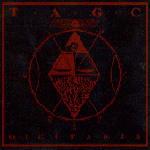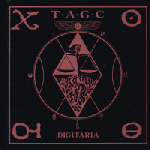


|

|
Side Effects Version
|
Sweatbox Version
|
The following text is derived from Dogon knowledge, with the addition of western Anthropological and Astrophysics information. The Dogon are situated in a remote area of Mali in West Africa. Their knowledge is dated to be around five thousand years old this being pre-extant among the ancient Egyptians, who seemed to be the source of this arcane knowledge.
Sirius appears red to the eye, Digitaria white, the latter lying at the origin of all things. It is the "Egg of the World", aduno tal, the infinitely tiny, as it developed, it gave birth to everything that exists, both visible and invisible. To start with, it was just a seed of Digitaria Exilis = Po(Grain) Tolo(Star) - consisting of a central nucleus which ejected ever larger seeds of shoots in a conical spiral motion.
Sirius and Sirius "B" were once where our sun is now is. Sirius A being 10,000 times brighter then Sirius "B" (Digitaria). The Dogon consider Sirius "B" as the most important star in the sky although it is invisible. In 1862 the American Alvan Clark looked through the largest telescope then existing and saw a faint point of light where Sirius B should be, thus confirming its existence. In 1915 Dr. W. S. Adams of Mt. Wilson Observatory made the necessary observations to learn the temperature of Sirius B , which is 8,000 degrees - half as much again as our sun. it began to be realized that Sirius B was an intensely hot star which radiated three to four times more light and heat per square foot than our sun. It then became possible to calculate the size of Sirius B, which is only three time the radius of earth, yet its mass was just a little less than our sun. A theory of white dwarfs then developed to account for Sirius B, and other white dwarfs were later discovered. This star according to Dogon mythology is composed of sagala, a form of metal unknown on Earth (the root of Sagala meaning both "Strong" and "Heat"). Sagala could be an equivalent to the degenerate and superdense matter of white dwarf stars.
According to Dogon legend the "Nommo" (Amphibian extraterrestial beings) descended to the Earth to implant knowledge to Gogo (the Fox), Ogo also means impure and is symbolized by mankind. The fox rebelled at its inception, impatient to couple with its double and broke away from Amma, who is the Dogon head of the universe (God, etc.) and thus Ogo remained unfinished.
For the Dogon an infinite number of stars and spiraling worlds exist. The satellites are called "Tolo Gonoze" - "Stars that make the circle". The heavenly motions are likened to the circulation of the blood. The planets, satellites and companions are "Circulating blood". This brings us to the extraordinary point that the Dogon know about the circulation of the blood in the body derived from their own traditions. In our own culture, the Englishman William Harvey (1578-1657) discovered the circulation of the blood, here follows the Dogon theory on its circulations; "The movement of the blood in the body which circulates inside the organs in the belly, on the one hand "clear' blood, and on the other the oil, keeps them both united (the words in man): that is the progress of the word. The blood-water(-or- clear) goes through the heart, the lungs, the liver and the spleen; the oily blood goes through the pancreas, kidneys, the intestines and the genitals." The Dogon mythology is extremely complicated and detailed, their knowledge of the Sirius system and other cosmological data are implemented into their beliefs which are an integral part of their daily life.
Directional effects in reproduced sound seem to have first been noticed, apparently accidentally, at the Paris Electrical Exposition of 1881 (3) Ear pieces were provided each fed from a separate carbon microphone, indeed in the absence of amplifiers at the time there was virtually no alternative. The microphones were placed in the neighboring Opera and the directional effects were noticed when one ear piece was applied to each ear.
The observation remained a curiousity for many years. Even when the idea of "high fidelity" reproduction began to replace the "mellow toned radiogram" from the 1940's onwards, there was little or no public awareness of the need to reproduce more then a moniphonic ally. Meanwhile however, the famous Philadelphia Washington relay of 1993 (4) had publically demonstrated directional effects. These were based upon the mullet channel spaced microphone and loudspeaker methods. In England. Alan Blumlein has by 1931 developed a systematic technology of stereo reproduction based on what are now called coincident pair directional microphone methods.
Monophonic recording and broadcasting remained throughout the change-over from the 78 rpm shellac pressing to the modern microgroove disc, and stereo was not effectively introduced into market until the 1960's. Even then, "stereo" remained for a considerable time a cult word with sybaritic connotations.
The inherent limitation of stereo is that it provides directional information only over a frontal soundstage limited in practice to about 60 degrees. In seeking to expand the audio market, several companies had the idea of extending directional information to all around the listener. This is defined as surround sound.
These early attempts at surround reproduction were known by the Latin-Greek hybrid name "quadraphonic", but it was immediately apparent that this attempt suffered from defects of assumption, aim, and method which would militate against satisfactory performance. Indeed over the next decade or so the various 'quadraphonic" systems failed to gain a satisfactory market share.
The inception of the "quadraphonic" attempt at surround reproduction seems to have been an observation that strong experiences could result from playing four tracks of a multi-track tape into a corresponding set of four loudspeakers disposed about the listener.
Once it is understood that the need is not to encode four or any other number of "channels" (which is semantically and technically impossible anyway) but to encode direction, matters become both simpler and more favorable. Two channels already provide two parameters which can be used for encoding direction, namely relative amplitude and relative phase. These quantities can be conveniently displayed on the Poincare'-Stokes representative sphere (5) of its stereographic projection.
Although in principle both altitude and azimuth angles could be encoded, subsidiary requirements confine two-channel surround systems in practice to horizontal surround only.
Ambisonic encoding is of course easily provided synthetically by ambisonic pan-pots, etc. The "Soundfield Microphone" (SFM) also provides direct transduction of live soundfields. Based on the theory of sampling on the surface of a sphere, the principle of the SFM has proved so good in overcoming earlier limitations that further development of capsule technology has been needed to exploit it to the full. A soundfield microphone is equivalent to any number of truly coincident first-order microphones (i.e. of the cardoid family) each independently steerable horizontally and in height. It thus provides unprecedented operational flexibility (either during a recording or broadcast, or afterwards if it is recorded) as well as high quality because of the avoidance of combifilter effects of spaing, and because pressure and velocity responses can be equalize separately.
The task of the decoder is to feed to the loudspeakers of the eventual listener such feeds as will radiate into the room sounds which cooperatively give the listener correct directional clues. Since these feeds must be adapted to the size and shape of the loudspeaker layout including the number of loudspeakers used, they cannot have existed at any earlier point in the chain. Ambisonic decoders are equipped with simple controls, partly analogous to the "balance" control of stereo, enabling the necessary adaptation to be made.
The human ear-brain system uses a number of mechanisms for locating sound, the nature of which needs to be understood for optimum design. The essential key lies in the physics of diffraction of soundwaves at the human head, and the conditions this imposed on the types of information available to the ear.
The key facts had already been established by Lord Rayleigh before 1907. In that year he wrote in the Philosophical Magazine (6) "I is some thirty years ago since I executed a rather extensive series of experiments in order to ascertain a more precisely what are the capabilities of the ears in estimating the directions of sounds."
Soundwaves impinging on the human head occur a about 500Hz.
Using the principle that the total field is the sum of the incident field and the scattering, it follows that at low frequencies, where the scattering is small, the head is effectively in an undisturbed soundfield. Only small differences are then possible in the intensity experienced by the two ears, and the phase difference corresponds to the free-space propagation time between them. At higher frequencies, substantial intensity differences are possible, but the phase information becomes ambiguous. because of the fourth-power law, the changeover between the two regions is quite sharp, occupying approximately an octave. Thus rayleigh, quoting from his "Theory of Sound" (7) concludes that the maximum possible difference of intensity at 250 Hz amounts to only (in modern terms) 1 dB, but can be over 3 dB at 500 Hz. He estimates that the ambiguous phase-difference of plus or minus 180 occurs at about 600 Hz.
It follows that evolution has had no option but equip us to use phase information below about 500 Hz, and intensity information above this frequency, if we are to have the power of localizing sounds in both frequency ranges. it is only necessary to verify experimentally, as is easily done, that discrimination of direction is both above and below 500 Hz to prove that these must be the mechanisms employed in the respective frequency ranges; the physics permit no other possibility. Rayleigh indeed confirmed this conclusion by further experiments. Rayleigh also recognized a third region at still higher frequencies where discrimination, particularly as between front and back, "depends upon an alteration of quality due to the external ears... In this matter it would not be surprising if individual differences manifested themselves... Such individual differences are of course now recognized as a difficulty with dummy-head recording techniques.
The psychoacoustic design of ambisonic decoders consists in putting together and optimizing these facets, and in particular ensuring that the different mechanism of localization are presented with clues which agree with each other. Indeed Rayleigh himself reports (7) a series of ingenious experiments, both with tuning forks and then novel telephone ear pieces, showing how the sense of direction disappears when this phase-clues at lower frequencies and similarly the intensity clues at higher frequencies, requires the characteristics of a well designed decoder to change with frequency, and this is an especially significant feature of ambisonic decoders.
References:
Project coordination: Adi Newton